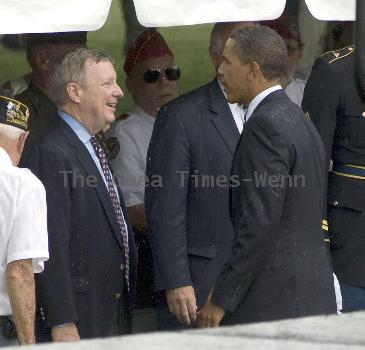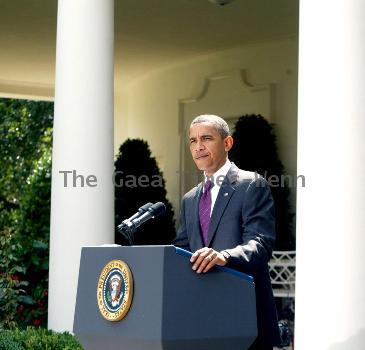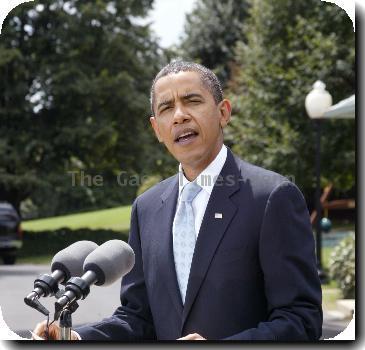US troops fire warning shots to end protests over Afghan police arrest of religious leader
By APTuesday, August 24, 2010
US troops fire shots to disperse Afghan protesters
KABUL, Afghanistan — U.S. troops fired warning shots to disperse a protest in eastern Afghanistan over the arrest of a religious leader suspected of a rocket attack, NATO said Tuesday.
The alliance said no civilian injuries were reported from the protest Monday, but Gen. Faqir Ahmad, the deputy police chief of Parwan province, said one civilian was killed by shots fired from an unknown source.
NATO said about 300 people surrounded a patrol and attacked vehicles with rocks and iron bars outside the massive coalition air base at Bagram, in Parwan province.
“After several attempts to stop the attack and disperse the crowd, coalition troops received small-arms fire directed at them,” NATO said in a news release. Coalition forces then fired the warning shots.
Gen. Ahmad said the only gunfire came from the coalition. He said the shots enraged the crowd, with some then using rocks and sticks to attack police and the head of the district government, Kabir Ahmad, who had tried to calm the situation. The deputy police chief said Ahmad and a police officer had serious but not life-threatening injuries.
The man arrested Monday by Afghan police was a religious teacher suspected of taking part in a rocket attack on a coalition patrol two weeks ago, Gen. Ahmad said. About 50 students from his religious school began the protest, which then attracted up to 2,000 villagers, he said.
Such protests among Afghan civilians often center on claims that U.S. or other international forces killed innocent civilians. NATO says some accusations are unfounded and accuses the Taliban and its sympathizers of inciting demonstrators.
Civilian deaths remain a highly sensitive issue with the potential to undermine support for the national government in Kabul and its international backers.
Although NATO has drastically reduced the civilian deaths it causes, they still happen. According to the United Nations, in the first six months of this year, 386 civilian were killed by NATO or Afghan government forces with many more deaths blamed on the Taliban.
The protest came amid intensifying fighting between Afghan and coalition forces and the Taliban, with five foreign troops, including two Americans, two French marines and a Hungarian soldier, killed on Monday.
The deaths bring the number of foreign forces killed in Afghanistan this month to 47, including 30 Americans, according to a count by The Associated Press.
Recent months have been a particularly bloody period for international troops, with 66 Americans killed in July — the deadliest month for the U.S. in Afghanistan since the 2001 invasion that overthrew the hard-line Islamist Taliban government.
Washington hopes to transfer an increasing share of the security burden to the Afghan army and police, but a senior U.S. commander on Monday would not predict when Afghanistan might take control and warned that NATO needs at least another year to recruit and train enough soldiers and police officers.
The assessment by Lt. Gen. Bill Caldwell, the head of NATO’s training mission in Afghanistan, further dims hopes that the planned U.S. withdrawal set to begin next year will be significant in size.
President Barack Obama has said that troops will begin pulling out in July 2011, the size and pace of withdrawal depending on security conditions. Defense officials, including U.S. Defense Secretary Robert Gates, have said they believe next summer’s pullout would be modest.
In a Pentagon briefing, Caldwell told reporters that Afghan army and police forces will not reach sufficient numbers until Oct. 31, 2011 — three months after Obama’s deadline to start U.S. withdrawals.
NATO has set the goal of creating an Afghan military and police force of 305,600 personnel — 171,600 army and 134,000 police.
There are currently 249,500 personnel — 134,000 army and 115,500 police.
But Caldwell predicted that desertion and injury rates are so high among Afghan forces that NATO will have to recruit and train 141,000 people to ensure it has the 56,000 additional personnel needed next fall.
Because Afghanistan is still scrambling to recruit and train its security forces, Caldwell said there was no accurate estimate on when Kabul might take control of even the more peaceful parts of the country.
Tags: Afghanistan, Arrests, As-afghanistan, Asia, Barack Obama, Central Asia, Collateral Damage, Fires, Kabul, Military Affairs, North America, Protests And Demonstrations, United States, War Casualties



